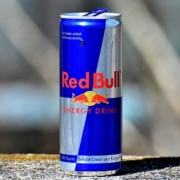Red Bull – Gives you Wings?…
The recent lawsuit brought back old marketing discussions I used to have about Red Bull. Though I’m not going into detail about the legal case here, it was interesting to note that the overall underwhelming nature of the product was called into question. It doesn’t give you wings? We all knew that, but it’s complete underperformance compared to the competition is an interesting topic to explore, particularly with the product’s popularity.
The fascinating element in Red Bull is the success while there is no specific advantage the product has over the competition. Not in caffeine, quantity, varieties, price or accessibility; Red Bull has competition that leads in every angle, except image. I had a friend who worked with them a while back, and we would argue about the product, but there was no factual arguing that Red Bull was a superior product. In the market of performance beverages, it lags behind, except in product value which is superior to practically anything on the market.
Some approximate ratings of comparable products:
Brewed Coffee – Cheap – approx. 100mg a cup
Monster – $3.00 – 160mg a can
Red Bull – $3.00 – 80mg a can
NoDoz – approx. $20 for 60 caplets – 200mg a pop
Notably there is an energy drink culture. The marketing and image surrounding Red Bull gives is superiority in energy drinks, and it separates it from pill and coffee related products. You don’t see athletes popping pills (for obvious reasons) or having a cup of coffee before an event. Still I loved to sit and discuss how Red Bull maintained such a valuable image despite the apparent lack of value in the materials.
Originator
There were other caffeine products on the market, but Red Bull revolutionized energy drinks. It became cool, and in a way, normal to see people slamming a Red Bull at school, at the bar and on the road. It may have been wrapped in a sports image, but the average consumer needed something to handle the everyday. It was the growing Red Bull product that captured the coveted ‘iPod’ or ‘Kleenex’ of it’s market. It didn’t matter what you ended up grabbing in the convenience store, you still would call it grabbing a Red Bull.
This position of becoming the description of a market, rather than just an option within it, gave Red Bull the household recognition title.
Size and Simplicity
There is a larger sized version and additional flavours now, but there is prestige to the silver can. It’s tough to describe, but it’s like the difference between a Starbucks cup and a McDonald’s. I prefer the taste and price of McDonald’s, but the image is arguably far less luxurious. The same goes for Red Bull, where holding the original, in it’s higher cost and everything, means more than holding a competing beverage.
They were in no rush to get an assortment of flavours either, calmly and patiently producing a couple options. I feel this wasn’t even necessary, and it might still be an experiment, but it shows a confidence that Red Bull has to the image of their brand.
Performance Excellence
It may be true that the drink itself isn’t the best, but it sure works with the best. Sports and athletics are saturated in endorsements, but Red Bull goes after the top names only. Everything they do, they do fantastically; their magazine is great, they have their own sports teams and everything is branded top notch.
There’s much more to say, but I wanted to get the thoughts rolling in people’s minds as to why products like Red Bull continue to lead despite the actual product’s value.
About the Author

With a unique, story-based approach to writing, Sean Kopen is an experienced content marketing specialist and instructional designer. Review some of his personal stories and perspectives at his website www.seankopen.com



